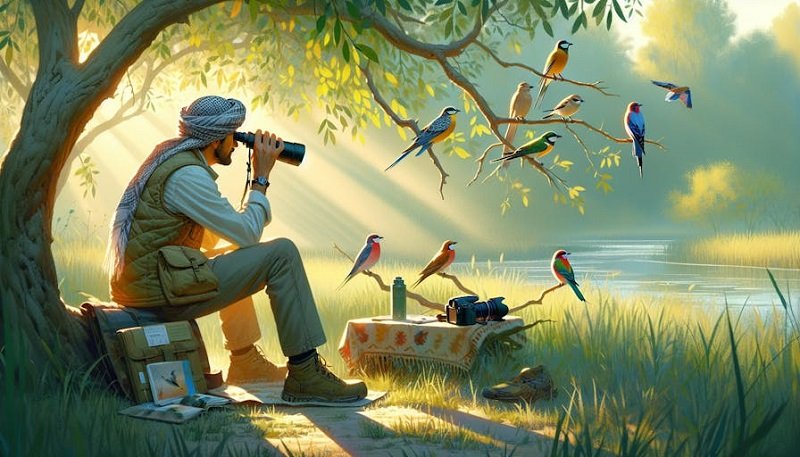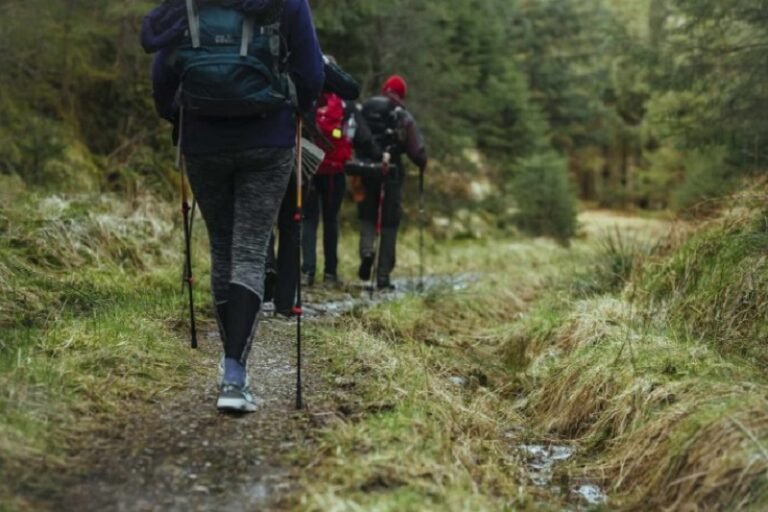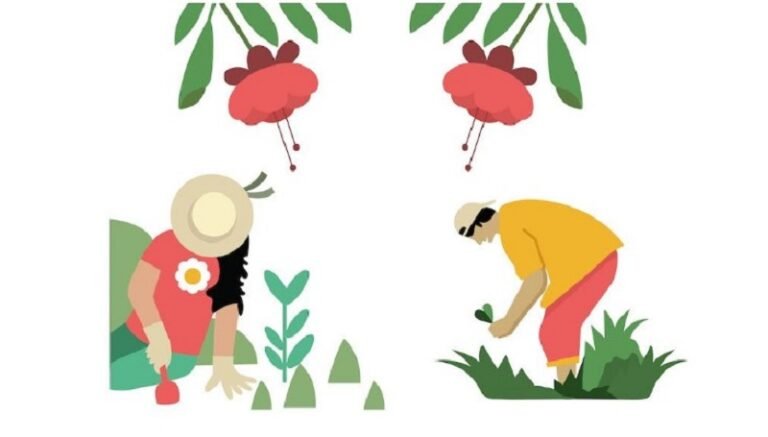The Skys the Limit: Delving into Birdwatching as My Beloved Hobby

Birdwatching: An Exciting Hobby
I gotta say, once I got hooked on birdwatching, I finally understood why folks of all ages find it so fascinating. It’s not just about eyeballing birds; it’s got perks galore for the body and mind.
Benefits of Birdwatching
Birdwatching is a bit like having a secret spa day. You’re not only getting fresh air and sunshine, but it’s also a pretty solid escape from life’s constant hustle. Watching birds do their thing lets me hit pause on the daily grind and find some zen. Plus, there’s something so soothing about being in nature and listening to birds sing instead of honking car horns.
There’s a peace to birdwatching that melts stress and taps into mindfulness. It’s like meditation with wings. Being in the moment, focusing on Twitter-less tweets, helps clear the head. Sunlight adds a bonus, boosting Vitamin D levels, which is great for bones, especially for the not-so-young crowd. It’s a natural mood-lifter all around.
Now, onto the cerebral perks: chasing birds with binoculars keeps the brain in shape. Spotting new species and identifying them gives those mental muscles a workout. It’s a surefire way to keep the noodles from going noodle-y as years go by, sharpening attention and brain power.
Getting Started with Birdwatching
If you’re itching to give birdwatching a whirl, you’ll wanna snag some binoculars. Trust me, a good pair is a game-changer for pulling sights up close. They’re like the VIP pass to the bird world, letting you catch all those feathered dramas a mile away.
And, in case you haven’t heard, there’s a bunch of apps out there that help with bird spotting and logging. These tech beauties not only help ID birds but also connect you with other birdwatchers. It’s like having a bird club right in your pocket.
Looking ahead, the thought of spotting new birds, soaking up some nature goodness, and reaping all these unexpected birdwatching benefits keeps me pumped and buzzing with excitement.
Essential Gear for Birdwatching
Getting knee-deep into my birdwatching hobby has taught me one thing: having the right gear makes it a whole lot more fun. Binoculars for up-close looks and smartphone apps for noting down bird sightings are must-haves for anyone serious about birdwatching.
Binoculars for Up-Close Views
Binoculars are every birdwatcher’s best friend. They give us a front-row seat to see birds up close, something you just can’t do with bare eyes. Checking out the feathers, colors, and how birds act in their natural habitat becomes so much easier, not to mention enjoyable.
Birders often go for binoculars with an 8x or 10x zoom and a 42mm lens – a good mix of powerful magnification and light-capturing ability. This combo works well whether it’s sunny or a bit dim out there.
If you’re just starting on this feathered journey, getting a solid pair of binoculars can make all the difference. It’s like unlocking a whole new level of nature appreciation. Wanna find out more about picking the right binoculars? Peep at Birda’s guide.
Smartphone Apps for Bird Logging
Smartphones have changed the birdwatching game. With bird-logging apps, we can jot down what we see, keep tabs on different bird species, and even help with science projects by sharing our findings.
These apps let birders create checklists, set alerts for cool birds nearby, and quickly look up different species. It’s like having your little bird encyclopedia right in your pocket, making birdwatching more engaging and joining a whole community of folks who love it too.
If you’re into taking photos of birds, tossing a camera into your kit ups your game for sure. Look for cameras with a wicked zoom – think 50x to 83x – and maybe some GPS tagging. It’s perfect for capturing those amazing bird shots. For tips on blending photography with birdwatching, check out Birda’s comprehensive guide.
With trusty tools like binoculars for jaw-dropping bird views and apps for tracking those feathered creatures, enthusiasts like me can dive into nature’s marvels and create our bird stories to share and cherish.
Top Birdwatching Cities
Trying out different cities to watch birds can be a real treat. You get to see all sorts of feathered friends doing their thing. Here, I’ll chat about some top spots for birdwatching, especially the cool sites in California and other big-name areas around the US.
California’s Birdwatching Hotspots
When it comes to birdwatching, California totally rules the roost. This location boasts an abundance of expansive areas and a remarkable diversity of avian species, making it an ideal haven for birdwatching enthusiasts. According to Lawn Love, out of the top 65 birdwatching cities, 43 are in California. Talk about bragging rights! A few standout cities include:
| City | Featured Species | Popular Parks and Reserves |
|---|---|---|
| San Diego | Pelicans, herons | Mission Bay Park, Torrey Pines State Park |
| Los Angeles | Hummingbirds | Griffith Park, Ballona Wetlands |
| San Francisco | Plovers, gulls | Golden Gate Park, Lands End |
What makes these places super special? They’ve got loads of national and state parks full of chirpers to check out! Besides, spots like LA, Long Beach, and Santa Clarita rank high with bird lovers, not far behind big ol’ Chicago (Lawn Love).
Major Birdwatching Locations in the USA
California may be the top dog, but let’s not forget other US cities that capture the imagination of bird fans too. New York is like the big cheese for birdwatching, thanks to its mix of bird habitats and top-notch conservation work. There’s all kinds of Audubon centers, nature sanctuaries, and places where birding groups hang out (Lawn Love).
Here are some other fab cities to consider:
| City | Notable Bird Species | Key Birdwatching Sites |
|---|---|---|
| Chicago | Warblers, sparrows | Montrose Point Bird Sanctuary, Jackson Park |
| Seattle | Bald eagles, owls | Discovery Park, Union Bay Natural Area |
| Miami | Herons, ibises | Fairchild Tropical Botanic Garden, Oleta River SP |
So whether you’re all about the vibey coastal towns of California or exploring the bustling birdy spots in New York, every city brings its own birdwatching twist. Soak in the sights, sounds, and incredible sights of nature in these wonderful spots, all while keeping an eye on those lively winged wonders.
Bird Conservation Success Stories
As someone who’s been glued to a pair of binoculars more times than I care to admit, watching birds make a comeback fills my heart with joy. Seeing these feathered dynamos bouncing back is like watching nature’s own underdog tale. Thanks to the hard graft and big-heartedness of conservationists around the globe, endangered birds are making astonishing recoveries. It’s a testament to what teamwork can achieve when people care enough to act.
Restoration Efforts for Endangered Birds
The story of the bald eagle is like a page-turner that ends with a fist-pumping victory. Back in the day, these majestic raptors were teetering on the edge of disappearing forever, thanks to over-zealous hunting, doubly disastrous pesticides, and a shrinking home turf. But in swooped a game-changer: the outlawing of DDT in the ’70s, coupled with the Endangered Species Act of 1973. Those efforts paid off by 2007 when bald eagles were finally given the all-clear from the threatened species list. Talk about a comeback! (U.S. Fish and Wildlife Service)
Next up, we have the feel-good comeback story of the brown pelicans. Once endangered, these birds owe a lot to places like Florida’s Pelican Island National Wildlife Refuge, which came into play in the early 1900s to save them from plumage hunters. Their numbers bounced back, proof that sometimes a little help from friends can make all the difference. (U.S. Fish and Wildlife Service)
Significant Recoveries in Bird Populations
Take a look at snow geese—the graffiti artists of the skies—where massive flocks flap their way through migrations. Through teamwork and habitat smarts at places like the Blackwater National Wildlife Refuge, these geese have staged quite a recovery. They even got their hunting pass back in 1975, turning a past necessity into a present success tale. (U.S. Fish and Wildlife Service)
And then there’s the red knot, royalty among globe-trekking birds. Their marathon flights aren’t without hurdles, but programs at Cape May National Wildlife Refuge and Delaware Bay work to give these birds the pit stops they need for successful Arctic trips. Many hands taming the harsh journey mean red knots have a shot at successful globetrotting generations. (U.S. Fish and Wildlife Service)
Puffins might be the quirky cousins in the bird family, but they’re stars in the conservation world. Sanctuary islands serve as their safe havens, safeguarding not just these birds but also the delicate ecologies they inhabit. By keeping their pantries stocked with herring and other small fish, conservationists ensure these iconic seabirds can thrive for years. (U.S. Fish and Wildlife Service)
These stories of recovery aren’t just footnotes—they’re proof of what can be achieved when humans put their minds, hands, and hearts into saving our winged neighbors. It feels great to shift from spectator to participant in these tales of survival and resurgence. I’m hopeful that with continued effort, we’ll keep writing success stories for the birds and the world they share with us.






